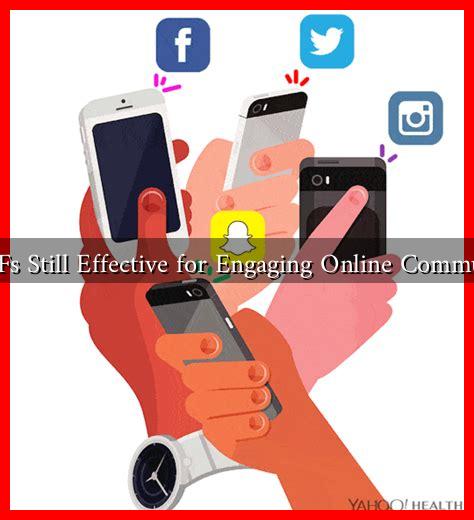-
Table of Contents
Are GIFs Still Effective for Engaging Online Communities?
In the ever-evolving landscape of digital communication, the use of GIFs (Graphics Interchange Format) has become a staple in online interactions. Initially popularized in the early 2000s, GIFs have transformed from simple animated images to powerful tools for expression and engagement. But the question remains: Are GIFs still effective for engaging online communities in 2023? This article explores the relevance of GIFs in modern digital communication, their impact on engagement, and how they can be effectively utilized in various online platforms.
The Evolution of GIFs
GIFs have come a long way since their inception. Originally created in 1987 by CompuServe, they were primarily used for simple animations and low-resolution images. However, with the rise of social media and messaging platforms, GIFs have evolved into a dynamic form of communication. Today, they are used to convey emotions, reactions, and humor in a way that text alone often cannot.
Why GIFs Still Matter
Despite the emergence of new forms of media, GIFs continue to hold significant value in online communities for several reasons:
- Visual Appeal: GIFs are visually engaging and can capture attention more effectively than static images or text.
- Emotional Expression: They allow users to express emotions and reactions succinctly, making conversations more relatable and lively.
- Shareability: GIFs are easily shareable across various platforms, enhancing their reach and impact.
- Community Building: They foster a sense of belonging and community by allowing users to share common interests and humor.
Statistics That Speak Volumes
To understand the effectiveness of GIFs, consider the following statistics:
- According to a study by Giphy, 66% of people believe that GIFs help them express their feelings better than words.
- Social media posts that include GIFs receive 26% more engagement than those without.
- In a survey conducted by HubSpot, 54% of marketers reported that using GIFs in their content improved audience engagement.
Case Studies: Brands Leveraging GIFs
Several brands have successfully integrated GIFs into their marketing strategies, demonstrating their effectiveness in engaging online communities:
- Netflix: The streaming giant uses GIFs to promote its shows and movies on social media, creating buzz and encouraging sharing among fans.
- BuzzFeed: Known for its viral content, BuzzFeed often incorporates GIFs in its articles, making them more entertaining and shareable.
- Slack: The workplace communication tool has a built-in GIF feature that allows users to express themselves in a fun and engaging way, enhancing team interactions.
Best Practices for Using GIFs
To maximize the effectiveness of GIFs in engaging online communities, consider the following best practices:
- Relevance: Ensure that the GIFs you use are relevant to the conversation or content. Irrelevant GIFs can confuse or alienate your audience.
- Quality: Use high-quality GIFs that are visually appealing and not pixelated or distorted.
- Moderation: While GIFs can enhance engagement, overusing them can lead to clutter and distract from the main message.
- Accessibility: Consider adding captions or descriptions to GIFs to make them accessible to all users, including those with disabilities.
Conclusion: The Future of GIFs in Online Engagement
In conclusion, GIFs remain a powerful tool for engaging online communities in 2023. Their ability to convey emotions, enhance visual appeal, and foster community interaction makes them relevant in today’s digital landscape. As brands and individuals continue to adapt to changing communication trends, incorporating GIFs thoughtfully can lead to increased engagement and a more vibrant online presence. As we move forward, it’s clear that GIFs are not just a passing trend but a lasting element of digital communication.
For more insights on the impact of GIFs in digital marketing, you can visit HubSpot’s blog.

